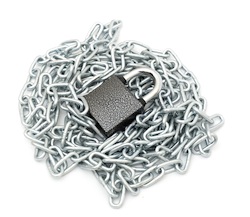 I recommend you read Nat Eliason‘s piece No More Struggle Porn. He’s attacking one of the more pervasive startup myths around, the idea that the struggle itself, the overwhelming and overpowering struggle that pushes everything else out of your life, is a good thing. He defines struggle porn as:
I recommend you read Nat Eliason‘s piece No More Struggle Porn. He’s attacking one of the more pervasive startup myths around, the idea that the struggle itself, the overwhelming and overpowering struggle that pushes everything else out of your life, is a good thing. He defines struggle porn as:
I call this “struggle porn”: a masochistic obsession with pushing yourself harder, listening to people tell you to work harder, and broadcasting how hard you’re working.
And his take on it, in a nutshell, is this:
Working hard is great, but struggle porn has a dangerous side effect: not quitting. When you believe the normal state of affairs is to feel like you’re struggling to make progress, you’ll be less likely to quit something that isn’t going anywhere.
The Myth of Persistence
I agree with him. Emphatically. I’ve posted here before on The Myth of Persistence:
Why: persistence is only relevant if the rest of it is right. There’s no virtue to persistence when it means running your head into walls forever. Before you worry about persistence, that startup has to have some real value to offer, something that people want to buy, something they want or need. And it has to get the offer to enough people. It has to survive competition. It has to know when to stick to consistency, and when to pivot.
So persistence is simply what’s left over when all the other reasons for failure have been ruled out.
Knowing When to Quit
And, with that in mind, I like Seth Godin’s take on quitting, which is the main point from his book The Dip (quoting here from Wikipedia
Godin introduces the book with a quote from Vince Lombardi: “Quitters never win and winners never quit.” He follows this with “Bad advice. Winners quit all the time. They just quit the right stuff at the right time.”
Godin first makes the assertion that “being the best in the world is seriously underrated,” although he defines the term ‘best’ as “best for them based on what they believe and what they know,” and ‘world’ as “the world they have access to.” He supports this by illustrating that vanilla ice cream is almost four times as popular as the next-most popular ice cream, further stating that this is seen in Zipf’s Law. Godin’s central thesis is that in order to be the best in the world, one must quit the wrong stuff and stick with the right stuff. In illustrating this, Godin introduces several curves: ‘the dip,’ ‘the cul-de-sac,’ and ‘the cliff.’ Godin gives examples of the dip, ways to recognize when an apparent dip is really a cul-de-sac, and presents strategies of when to quit, amongst other things.
Don’t let the struggle porn startup myths get you down. I’ve been through startups. I’ve been vendor and consultant to startups for four decades, and I started my own and built it past $9 million annual sales, profitability, and cash flow positive, without outside investors. And I’ve never believed that anybody is supposed to give up life, family, relationships, and the future to build that startup with 100-hour weeks and forget-everything-else obsession. Here’s what I say:
Don’t give up your life to make your business better. Build your business to make your life better.
The post You Have to Know When to Quit appeared first on Planning, Startups, Stories.
from Bplans Articles https://ift.tt/2CyyZ1v
No comments:
Post a Comment